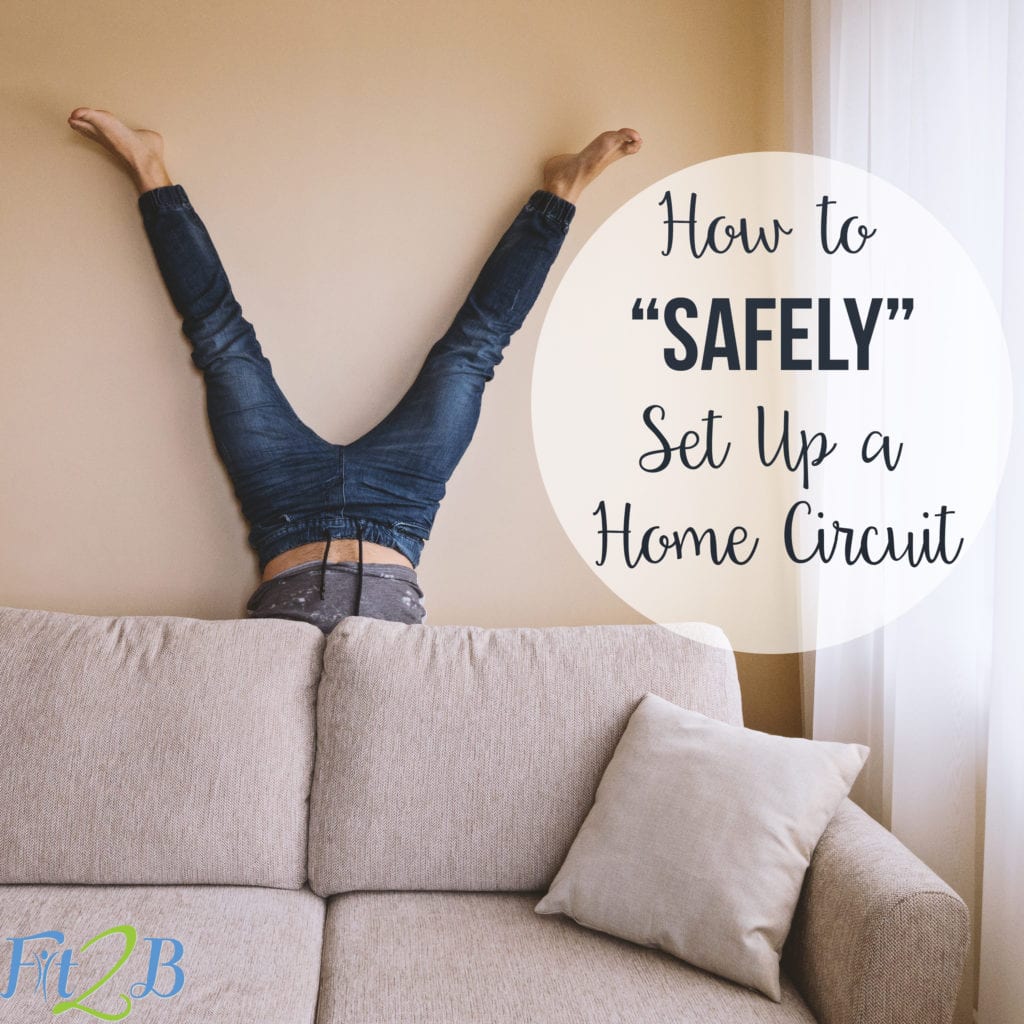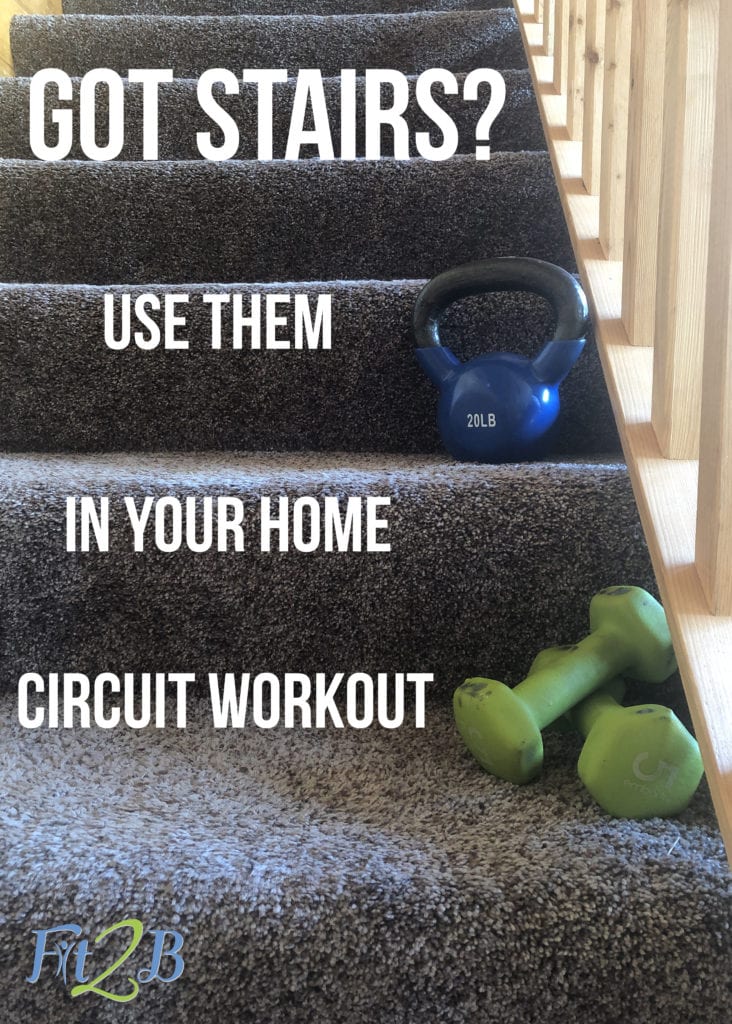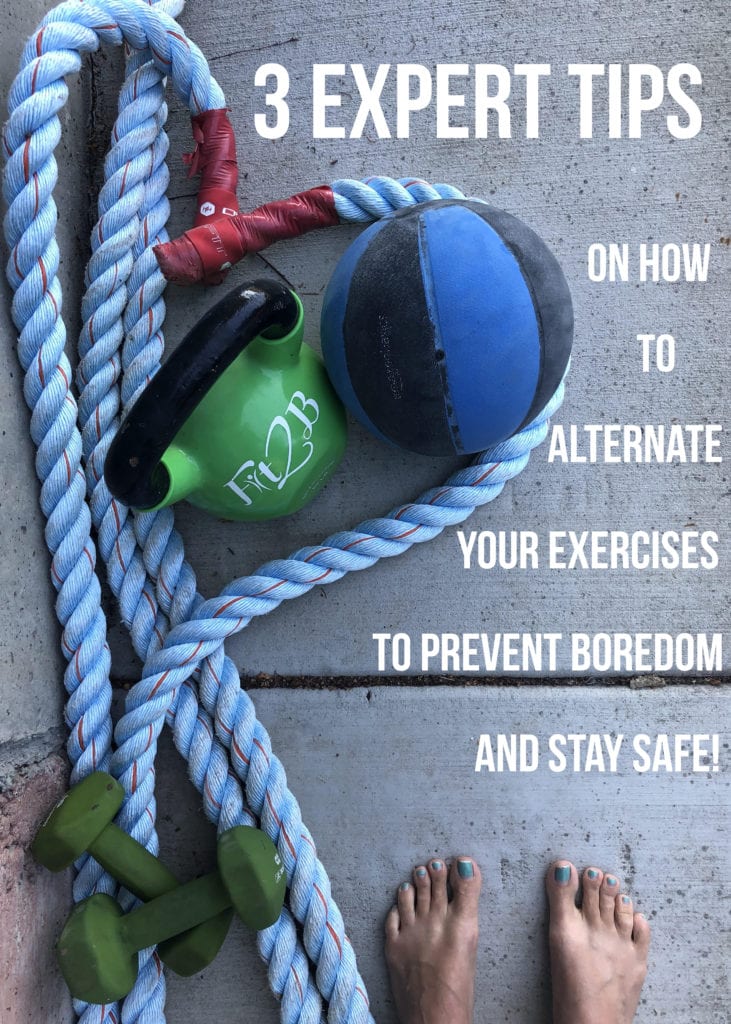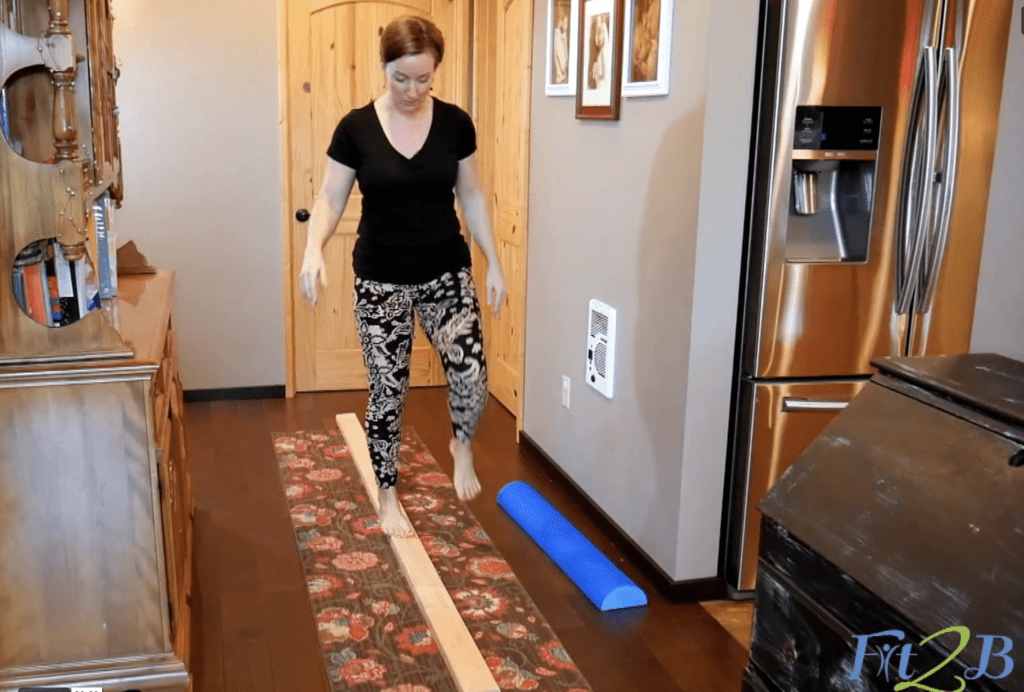Blog
How To Safely Set Up A Home Circuit Workout
If you’re exercising at home right now, you definitely want to learn how to safely set up a home circuit workout. The built-in accountability and variety are awesome, and you don’t need any equipment to get started! Here’s the basics:
Essentially, you’re going to set up 8-10 stations around your home, and you’ll do one exercise at each station for a set number of reps or a set amount of time. You’ll do that circuit 2-4 times for a full-body home workout that you can utilize 2-4 times per week. Here’s an awesome home circuit workout video our members can use, but let’s take a moment to dive into some deeper details!

Can you think of some exercises:
- You can do for 35-45 seconds each.
- You can do for 4-20 repetitions (reps) each before you’re tired.
- You know will raise your heart-rate a little or a lot.
- You feel safe doing with good alignment and breathing strategies.
- For which you already have equipment.
- For which you don’t need equipment.
- For which you’d need to buy that new piece of workout equipment you’ve been wanting.
- That you’d like to improve your ability to do.
- That bore you, but you know you need to do them.
- That you enjoy and feel kinda excited to perform.
- That make you feel powerful.
- That whoop your taters a little or a lot.
- That stretch your own peculiar tight spots.
My friend, if you have even 4-5 of those bullet points clicking in your craw right now, you have MORE than what it takes to safely set up a home circuit workout!
STEP ONE: Write down those exercise ideas right now on a piece of paper!

STEP TWO: Scatter Your Props
That’s right, I want you to scatter your fitness props around your whole house or at least the largest room you have. Spread. Them. Out.
Many typical workouts require you to ‘gather’ or ‘assemble’ your prop(s) into one place. Then you do your exercising in one place. There’s nothing wrong with working out at home in one spot. We have hundreds of streaming home workout videos on Fit2B that enable people to workout in small areas.
However, part of the beauty of a home workout circuit is the bonus movement you give your body when you walk BETWEEN stations. You lift something for 35-45 seconds, then take deep breaths as you transition to your next exercise which might be doing a yoga pose or performing jumps off your lowest stair step. I love using stairs in my lower body circuit!
Part of the beauty of a home workout circuit is the bonus movement you give your body when you walk between stations.
Here’s how a week with two home workout circuits might look:
- Monday: Go for a walk
- Tuesday: Home Workout Circuit
- Wednesday: Do a Fit2B Yoga Workout
- Thursday: Do a Fit2B cardio workout
- Friday: Home Workout Circuit
- Saturday: Do a Fit2B Pilates Workout
- Sunday: Something active & fun with the whole family
STEP THREE: ALTERNATE YOUR EXERCISES
Setting up a home circuit workout safely takes a tiny bit of planning. Alternating your exercises to give yourself variety will also ensure you have fun, stay safe, avoid injury, sweat lots, remain consistent, and finish strong every time PLUS look forward to doing it again!

Here are 3 expert fitness tips on how to mix and match exercises that should give you some more ideas on what to do:
- Alternate Pushing & Pulling Stations – Work on your pushups at one station for 35-45 seconds. Then work on your pull-ups at the next station. Do bicep curls, rest 15-25 seconds, and then do something for your triceps.
- Alternate Loaded & Unloaded Stations – Use weights at one or two stations (don’t work the same body area twice in a row) and then do 1-2 exercise stations that don’t require weights like stretching, bouncing, stairs, or mobility drills.
- Alternate Cardio & Calm Stations – Build at least one or two calmer stations into your circuit. This creates an interval training effect. It also promotes the concept of “active rest” and provides your body with even more movement variety!
STEP FOUR: ROTATE
Rotate new exercises into your home workout circuit on a regular basis. I swap out something at least once a week. I trade one style of chest work for another. I swap in a new mobility drill. I make something up. If I don’t like how it feels, I do something different the next time around, or I try again! Also, be sure one of your stations includes trunk rotation for core fitness and heart health!
How I plan my week with circuit workouts
Another way to alternate and “cross train” in your workouts is to do your upper body circuit one day, your leg circuit the next day, and then something totally different on the third day.
When I first started teaching circuits and doing them myself, I included all muscle groups in a single circuit. I would walk or teach a cardio or yoga class on the other days. Then Covid-19 happened, and I – like everyone – needed to spread my home fitness sessions out differently. That’s when I came up with my simple 2-2-2 principle.
With my 2-2-2 Principle, I do two upper body circuits, two lower-body circuits, and two (sometimes three) other things each week. This gives me variety AND puts several days of rest between lifting sessions for my upper and lower body. It ends up looking like this for me:
- Monday: Upper Body Circuit
- Tuesday: Lower Body Circuit
- Wednesday: Walk or Yoga or Seasonal Activity
- Thursday: Upper Body
- Friday: Lower Body
- Saturday/Sunday: Walk or Yoga or Seasonal Activity
It’s important for you to own your personal practice in this season of your life. As a female, my body’s needs change from week to week, month to month, and I’ve been through a lot. My body has needed different things during pregnancy, after birth, when my kids were small, after each of my 3 surgeries, and through the postpartum (and now perimenopausal) stages. Doing 2-4 home circuit workouts each week has kept me strong for YEARS through many seasons!
Some station ideas
Exercises on Your Stairs
- Hold weights and step up/down
- Climb them two at a time
- Fast feet drills
- Lunge back and down a few steps
- Wide lunges upward
- Get ideas from our Fit2B Stair Interval Workout
Exercise on Your Chairs
- Tricep dips
- Inclined, modified pushups
- Supported Yoga like Warrior Poses
- Get hip exercise ideas from our Fit2B Hipster Chair Moves Workout
Exercises on Your Rug
- Mermaids
- Shoulder Bridges
- Superwoman or Locust Pose
- Log Rolls
- Pilates Teasers
- Sliding lunges with your foot on a paper plate
- Get ideas from our “Sit & Get Fit” section here on Fit2B
Exercises on Your Vinyl or Wood Floor
- Sliding lunges with your socks
- Sliding planks (put socks on hands/feet and slide them)
- Click the image below for planking modifications for Diastasis Recti!
- Get more ideas from our Fit2B Wood Floor Workout
Speaking of safety…
Safety is more than avoiding smashed toes from falling weights. Alternating your exercises within a single workout circuit (i.e. going back and forth between upper body and lower body stations) plus rotating a variety of fresh exercises into future circuits will help you stay safe by preventing chronic overuse injuries. You’re letting one group of muscles rest while another group gets worked. Here are some more tips:
- Tell other people in your home that you are working out and to stay clear so they don’t get kicked or hit with a swinging kettlebell.
- Ensure that all small children and pets are occupied with things that will keep them out of your range of motion… or figure out how to include them safely. A cooperative cat can be a great weight 😉
- Clear your areas of exercise. Running a gauntlet can be a workout, but tripping over clutter is annoying and dangerous.
- If you’re using earphones like AirPods, keep the volume set to allow you to hear background noise so that you’re aware of any emergencies.
- Workout within your limits. You only have one body, and repairs are expensive and time consuming. Honor your body today, and it will honor you tomorrow.
- Stop if something doesn’t feel right. That twinge in your lower back, that new ache in your knee, that tingling in your fingers, that nausea, that increase in postpartum bleeding… ALL SIGNS TO STOP and assess and do something different.

Let’s talk about Home Circuit Workout Levels!
Level 1: Starting with the basics
Okay, so… You’ve got a bunch of ideas, and you’ve made your list. You’ve scattered your props around your main floor space. You have a certain number of reps per exercise in mind, or you’ve got your timer ready. Hold that plan loosely and just begin. Keep it basic and make lots of observations. Note how long it really takes you to change stations, complete certain exercises, and whether the order of operations needs to change . Give energy where you’ve got it and hold back where you don’t… because that’s just more of the variety your body needs anyway. Your goal at this stage should be to complete 2-4 rounds of your home circuit workout 1-2 times per week at light to moderate intensity.
Level 2: Move Upward & Add Impact
When you first begin a new fitness program, it’s important to follow the principle of progression. You do the basics for a few weeks, then you build on those basics. This is what we do in every fitness course we offer here on Fit2B. We build the habit and strategies with the easy stuff, then we gradually raise the intensity, time, or distance. Adding impact and gravitational challenges will dramatically increase your intensity level. Here’s how it works: Whenever a station becomes too easy or boring, just ROTATE in something on your stairs, some floor-to-standing transition moves, some jumping or quick-feet mobility drills to wake up those fast twitch muscle fibers.
Level 3: Get Creative & Shift Outside!
As you’re doing your exercises, your brain may start wondering if adding a leg lift or spiral motion would be fun. You may start toying with motions in different directions, or adding some dance. Have fun, practice good core connection, and go for it!
I asked for a bouncy medicine ball for Christmas a few years ago. We don’t bounce balls in the house – especially not ones that weight 10 lbs – so I had to use it outside. Integrating my new fitness toy into my home workout circuit required me to go outside. We don’t wear shoes in our house, so I found myself staying barefoot for this brief 45-second interval. Gradually, I added more outdoor stations: A slam ball, a set of battle ropes that I looped through our porch rail, a pair of dumbbells, and “Green Gertie” – check out our color series – lives out there now too!
Being outside is so good for our eyesight, mental health, vitamin D levels, mood, circadian rhythm, and taking those extra steps outdoors simply offers stimulation from the environment and weather that your body needs!
For all weather workout tips for moving more outdoors, click HERE or the image above to read more!
Leave a comment
What more would you like to know about how to safely set up a home circuit workout?
If you have already make your own workout circuit at home, what advice can you give others? What equipment would you recommend? What’s something you wish you’d known about fitness a few years ago? We love it when people leave comments!


